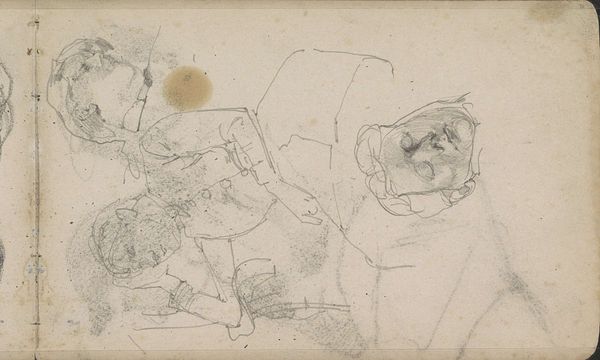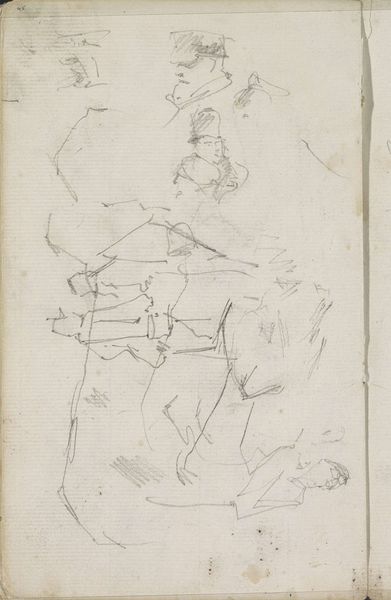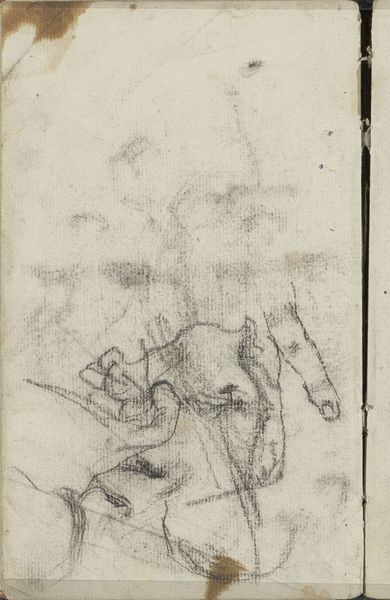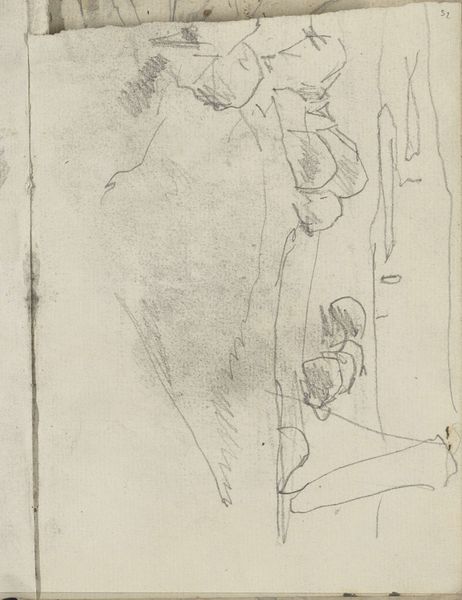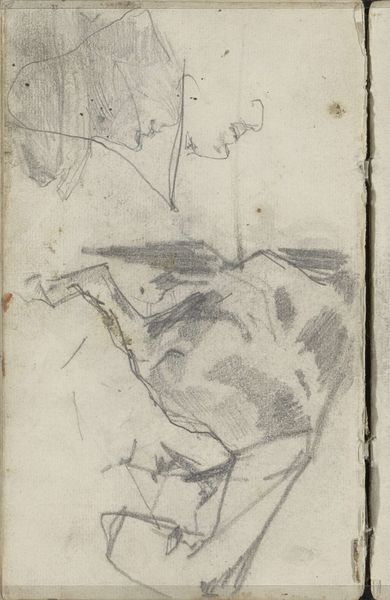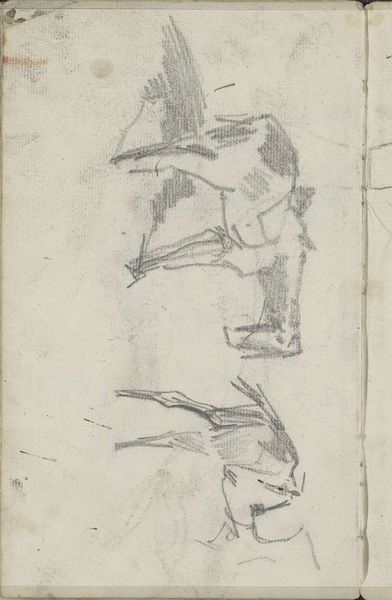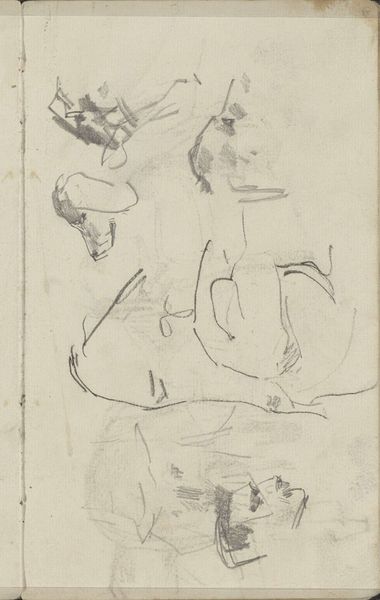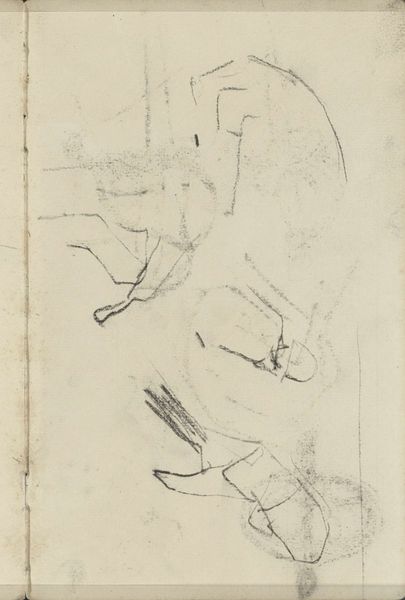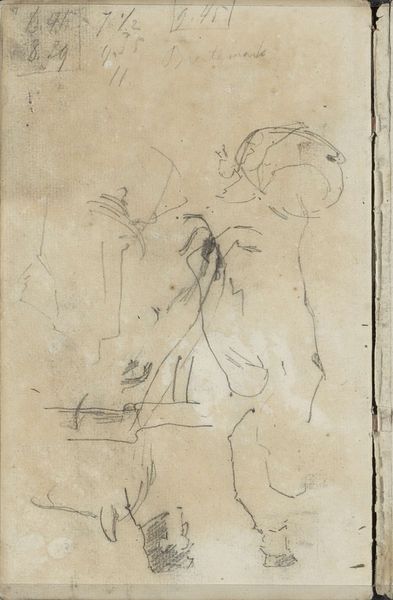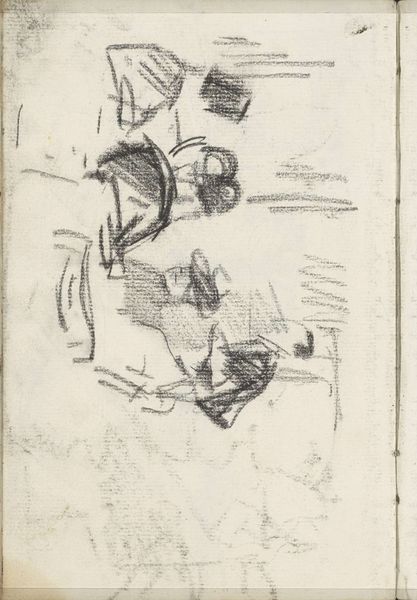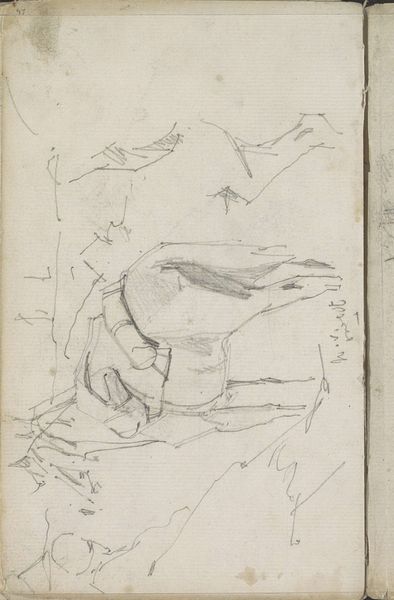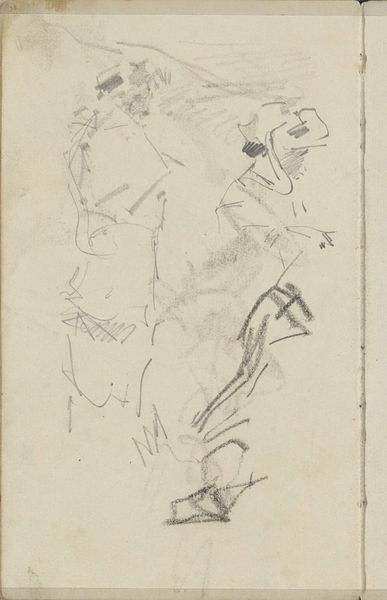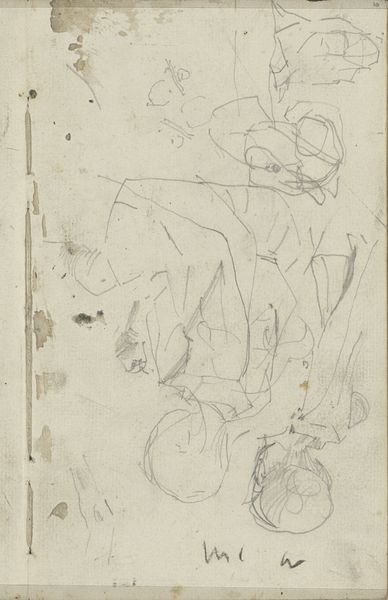
drawing, paper, pencil
#
drawing
#
dutch-golden-age
#
impressionism
#
pencil sketch
#
landscape
#
figuration
#
paper
#
pencil
#
horse
#
sketchbook drawing
Copyright: Rijks Museum: Open Domain
Curator: Before us is George Hendrik Breitner's pencil drawing, "Horses and a Figure Study," created between 1881 and 1883. It's currently held in the Rijksmuseum collection. Editor: My initial impression? Raw energy. Like a page ripped straight from the artist's mind, still crackling with creative lightning. Curator: Precisely. Notice the immediacy of the strokes, the layering of lines. The composition favors process over polished representation. It's almost anti-narrative; pure visual exploration. We might interpret the figure as a grounding element. Editor: Or not! Could be just another thought, equally weighted as those powerful, shifting horses. It’s more about feeling than seeing, wouldn't you say? Breitner is just trying to get to grips with reality. I've got pages and pages just like this in my sketchbooks. Curator: The dynamism arises precisely from this tension between observed reality and expressive abstraction. The use of pencil creates tonal variations despite the limited colour. Semiotically, the horses don’t merely represent equines; they stand for untamed vigour. Editor: Untamed, yes. But also vulnerable, perhaps. Sketches always show a vulnerable part of the artist, laying bare the thought process that may well go through all the starts and stops of the process before being thrown out the window! I love how these sketches can also create such energy just through their incompletion. Curator: An insightful point. The "incompletion," as you call it, resists closure. It invites the viewer to participate in the construction of meaning. Note also the stark contrast with other art being done in the 1880s, such as by artists like Alma-Tadema, who reveled in smooth surfaces, illusion and anecdote. Editor: It's funny, I often wonder what it was like, standing shoulder-to-shoulder with Breitner at some windswept polder or bustling marketplace in Amsterdam. To see the same things he saw and put down his images down this way. There must have been others with easels alongside him working a little bit harder towards perfect form. What did he think of those others, I wonder? Curator: Well, whether he felt contempt or pity is almost immaterial: his contribution lies precisely in the honesty of this study. It is art laid bare in front of the viewer's gaze. It's the real in realist art, and as such, something far beyond the average drawing of the era. Editor: A journey to its soul laid bare. So it is then with the drawings. Wonderful.
Comments
No comments
Be the first to comment and join the conversation on the ultimate creative platform.
